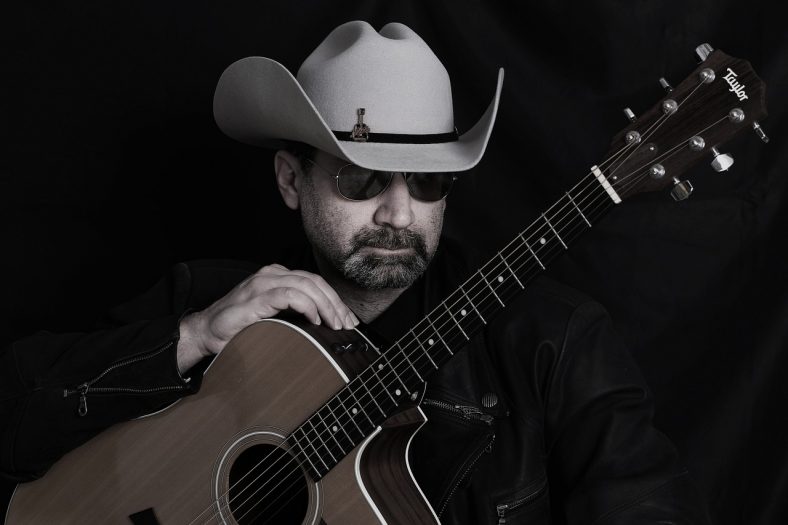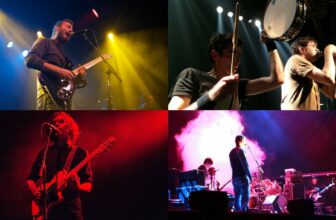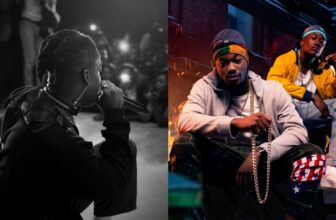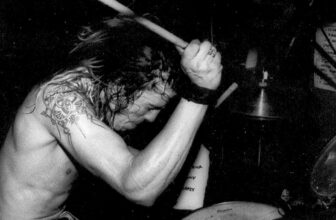15 Different Types of Country Music

Country music was one of the first genres of modern popular music, that originated in the Southern United States in the 1920s. It draws influences from styles such as Appalachian folk music, blues, gospel, and traditional Celtic music.
Country music is known for its simple form and harmony and usually includes ballads and foot-stomping dance tunes. This specific genre is typically played on instruments such as banjos, electric and acoustic guitars, dobros, fiddles, harmonicas, drums, and more.
Country music has many different sub-genres and it would be difficult to list all of them in one place. However, over the years, country music has been generally grouped into a bunch of different categories. Let’s examine some of the most popular country music genres in more detail below:
Contents
1. Bluegrass
Bluegrass, which has its roots in Appalachian folk music, has risen to prominence on its own. Jazz and improvisatory aspects are what make it stand out from initial Appalachian folk music. Instead of playing songs from beginning to end, the artists perform the same chords while composing their tunes.
To this day, bluegrass continues to be popular worldwide and it’s no wonder: there are renowned festivals like Telluride Bluegrass Festival and RockyGrass. Bluegrass artists also play at some of the largest and most prestigious music venues like Red Rocks and The Gorge.
2. Bakersfield Sound
A subgenre of country music, Bakersfield Sound emerged around Bakersfield, California, in the 1950s. While country music has always been inspired mainly by rock’n’roll, Bakersfield was the first to incorporate electronic instruments and an established backbeat.
The Bakersfield Sound sparked a renaissance in honky-tonk music in the 1960s and influenced later generations of country rock and outlaw country artists.
3. Early Country & Western
In the early 20th century, remote regions of the South and West were home to a genre of American music known as country and western. Since hillbilly music had been deemed demeaning by the music business, the phrase country and western music has been used to define this specific sub-category.
Folk songs and melodies of the English, Scottish, and Irish inhabitants of the Appalachian Mountains, and a few sections of the Deep South are at the heart of the country genre’s history.
While popular music was frequently cliched and nostalgic, rural songs possessed a liveliness and authenticity making them substantially different from similar categories.
4. Western Swing
The late 1920s saw the emergence of Western swing music, a different genre of American country music, among many Western swing bands of the West and South.
A federal wartime nightclub tax in 1944 contributed to the genre’s decline in several states during the 1930s and 1940s when it attracted large crowds to dance halls and clubs.
Jazz was a significant influence on the movement. A hot string band plays a mix of Dixieland, jazz, cowboy, rural, and blues, infused with a swing. Stringed instruments, mainly the steel guitar, are amplified to produce a distinct sound.
5. Country Pop
A country-pop crossover is when a country artist tries to make it big in the pop world by adopting a more commercial sound. You can often find pop-country songs in the mainstream Billboard Top 40.
American Idol has helped tremendously in making this genre popular. Shania Twain, LeeAnn Rimes, Lee Ann Womack, Taylor Swift, and Rascal Flatts are pop-country artists.
6. Alternative Country
It is a mix of country and alternative rock. Jason and the Scorchers paved the way with their 1980s-inspired sound to make this specific genre popular.
Due to its “punk rock” aesthetic and high production level, this style got ridiculed by music purists. Blood Oranges, Blue Mountain, and Drive-By-Truckers are just some of the artists who fit this description.
7. Rockabilly
Rockabilly is what defined early rock and roll music. In the United States, especially in the South, it dates back to the early 1950s. The result is known as “classic” rock and roll, which combines the sound of Western musical styles like country with rhythm and blues.
Country music played an essential role in shaping the style. These include boogie-woogie, jump blues, and electric blues, as well as western swing.
Strong rhythms, twangy vocals, and regular use of the tape echo were hallmarks of the rockabilly sound. The gradual addition of new instruments and vocal harmonies, according to music enthusiasts, has led to its “dilution”.
8. Country Folk
In Country-Folk, as in most other hybrid genres, the proportions of each side vary, primarily due to the performer’s preferences. For the most part, country-folk artists write and perform most of their material, closely resembling folk artists.
Many people also appreciate country-folk performers because of their songwriting ability; however, the only way that full-fledged country singers are willing to cover their compositions is when they perform them themselves.
The singer/songwriter tradition established by folk-rock artists like Bob Dylan can be traced back to country folk artists who write their material, focusing on lyrical complexity and thoughtfulness.
9. Nashville Sound
Country music’s Nashville Sound began in the mid-1950s when “smooth strings and choruses,” “sophisticated background vocals,” and “smooth tempos” associated with traditional pop replaced rough honky-tonk music’s dominance on the charts in the 1940s and 1950s.
What became known as Countrypolitan was the result of Nashville’s pop song structure becoming more prominent.
It has a mellower, more enveloping sound characterized by orchestral strings and choir accompaniment. Countrypolitan’s music sold well in the late 1960s and early 1970s because it targeted mainstream audiences.
10. Country Rock
In popular music, country rock is a subgenre that blends rock and country. In the late 1960s and early 1970s, rock musicians began to record country-flavored records, which spawned the genre. It was common for these artists to incorporate country themes, vocal styles, and additional instruments, most notably pedal steel guitars, into their rock albums.
It all started with artists like Bob Dylan and The International Submarine Band and culminated in the 1970s with Pure Prairie League and other country artists. As a result, country music has had a significant impact on Southern rock as well as different genres of music.
11. New Traditionalists
Also known as neo-traditional music, the instrumental background and a classical country vocal style are the identifiers of this category. Neo-traditional country artists often dressed in 1940s – 60s era attire for added effect.
Americana and alternative country music are sometimes associated with some new traditional artists. Contemporary country music was born in the 1980s as a counterpoint to the “urban cowboy” fad’s influence on mainstream country music, which was perceived to be bland at the time.
12. Appalachian Folk
Whenever you hear the mention of country music, you can’t help but notice its roots in Appalachian Folk Music. Traditional African American, Scottish and Irish melodies are among the many influences you can find in these types of country music.
Bluegrass and early country music would not have been possible without these early influences. Musicians rarely used guitars in most types of music during this period, and the fiddle and banjo were the instruments of choice.
13. The Honky Tonk
Many places play country music in honky-tonks as a form of entertainment for the establishment’s customers.
One can also use tack pianos to describe the type of music played on them. These bars are common in the American South and Southwest. Honky-tonk music has an entire rhythm section playing two-beat patterns with a crisp backbeat. Steel guitar and fiddle are the two most popular instruments in this genre of music.
Honky-tonk music was the first form of piano playing related to ragtime but focused more on rhythm than melody or harmony.
14. Progressive Country
Early 1970s progressive country music was a new subgenre of country music that became popular in the US. The slick Nashville sound dominated mainstream country music and the rock-influenced Bakersfield style of artists like Merle Haggard in the late 1960s and early 1970s, respectively.
Influenced by contemporary rock music and singer-songwriters such as Bob Dylan, a new generation of country artists emerged.
Musicians were the driving force behind the progress of country music. Writing for themselves, many artists found that they were more concerned with expanding country music than making a hit record.
15. Western / Cowboy
During the mid-nineteenth century, distinctively Cowboy and Western country music genres came to the forefront by mirroring the rare combination of inhabitants from multiple countries and the Northwestern USA. As a result, youngsters from across the country and overseas showed up to work as cowboys across the huge trail commutes in the mid-1980s.
They reworked oldies and popular music types to their liking, adding substantial and humorous rhymes about their jobs and lives, along with specific shouts and roars to farm livestock and interact with one another over massive areas of land. Their poetry further thrived during this period.
Cowboy tunes were performed, disclosed, and afterward spread across multiple places in the West by cowboys heading home from the railways’ farthest termini.
The Bottom Line
The country music genre continues to evolve each decade as musicians and songwriters adapt to the changing taste of the entertainment world. It has, however, not lost its foundation and continues to have the same flavor that it is known for. It has been combined with hip hop, rock, or rap, with the original instruments, and yet continues to bring home the authentic country feel.





